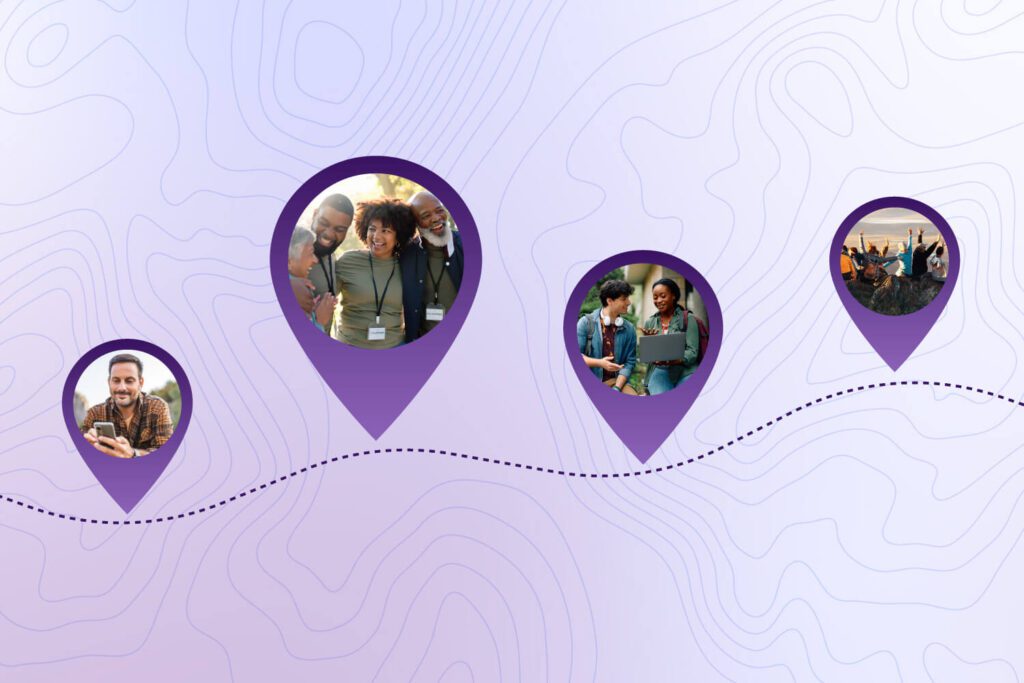Reclaiming trust: How nonprofits can strengthen their digital presence before year-end

When over a million donation pages appeared online in recent weeks without nonprofits’ consent, it sparked a discussion about digital transparency in philanthropy. While the company responsible has since apologized and corrected course, the situation raised questions about ownership, consent, and trust in today’s digital giving landscape.
As nonprofits enter the most mission-critical time of year, this conversation is more relevant than ever. Donors expect clarity, transparency, and confidence all year long, but especially during this time of increased giving. They want to know where their contributions are going and that they’re being used for the causes they care about. It’s also important for nonprofits to ensure their digital presence, including donation pages, their website, and public profiles, reflect their values and the important work they do within their communities.
Beyond reassuring donors and verifying data, this moment highlights the need for collaboration, responsibility, and inclusion in developing ethical nonprofit technology. As giving season approaches, Bonterra’s Vice President of Coaching and Chief Fundraising Officer, Kimberly O’Donnell, and Senior Vice President of Data Science, Ben Miller, share lessons on how nonprofits can strengthen their digital footprint and advocate for a more collaborative future for online fundraising.
3 Steps nonprofits can take to strengthen their digital presence
While it is unfortunately impossible for nonprofits to fully control their online footprint, there are steps they can take to strengthen their visibility, accuracy, and credibility with donors. Now is the perfect time to audit your online presence, ensuring donors can easily find legitimate information about your organization and donate to your cause this year-end giving season. Ben and Kimberly shared a few steps you can take to strengthen your digital presence:
1. Review your profiles on sites like Charity Navigator, Great Nonprofits, and Candid (GuideStar):
These platforms are meant to provide an unbiased overview of nonprofit organizations and serve as a primary donor and funder research tool. While these profiles are not owned by nonprofits, once you’ve verified, you can easily log in and make the necessary changes.
“One of the things we as fundraising coaches do whenever we first meet with a nonprofit is to say, ‘Hey, when was the last time you updated those [profiles]?’ Because that’s where funders are going to check you out,” said Kimberly.
2. Refresh your website:
- Review key pages like your homepage and about page to incorporate current language, stats, and imagery related to your organization.
- Audit any existing donation pages like your main donation page, program-specific pages, and year-end giving campaign page, and archive anything that may cause confusion with those active pages.
- Optimize your donation page for search by including your organization’s name, your mission, and ensuring it loads quickly and is mobile friendly. “Make yourself visible,” said Ben. “Part of the problem here was that [these unapproved donation pages] were showing up above [official nonprofit websites] on search. You have to optimize your search to be visible at year-end. This is the time of year that organizations must ensure that anyone who wants to see them can see them.”
- Simplify the user experience, “Make sure that your donation page is readily accessible on your website and the donate button is right there on the homepage, easy to find,” said Kimberly. “Show the multiple ways that a person can give to you and promote giving through your donation page on your social channels.”
3. Use AI to monitor your online presence:
“Leverage AI like Perplexity or Google to do a monthly search of your organization and EIN — finding anything that’s out there about the organization,” said Ben. “You could have AI help you monitor that and not have to take too much time out of your day.”
Taking these few simple steps will help nonprofits gain more control of their digital presence and ensure donors can support their cause this giving season.
Advocacy works, use your voice
Despite the negative effects of this incident, it’s clear that the nonprofit sector’s voice still matters. When nonprofits raised concerns about transparency and consent, the platform responded and took responsibility. “I think it’s very powerful that they walked back what they were doing and changed pretty quickly,” said Kimberly. “They were very agile, and that says a lot about the power that the sector has in driving change and advocating for themselves.”
Nonprofits should take this advocacy mindset into year-end and the new year. Whether you’re fighting for digital trust, funding equity, or data transparency, every nonprofit can play a role in shaping a more trustworthy social good digital landscape. When the sector speaks with clarity and purpose, it not only drives accountability but also reinforces the collective values that inspire giving in the first place.
Building technology that earns trust
Just as nonprofits should be transparent about their mission, goals, and how they plan to use dollars raised, nonprofit technology should be treated the same. For those developing tools for nonprofits, this moment offers a timely reminder that inclusion drives trust, and responsibility sustains that trust. If a solution is developed without nonprofits’ input, chances are it’s not going to serve their needs effectively. Collaborating with the nonprofit community is key to creating technology solutions they can use and benefit from while also building trust.
According to Ben, “Companies and consultants serving the social good sector carry an obligation: create more value for nonprofits than the investment needed to receive the value. That requires nonprofits to be embedded in the process, not just consulted along the way. Without that voice at the center, even well-meaning innovations can end up serving the market more than the mission.” While nonprofits’ feedback will inform how technology is built, it can also inform if it’s even necessary. “As these new products are being developed for all nonprofits, the first questions should be ‘why is this needed?’ and ‘what will it mean for them?’,” said Kimberly.
At Bonterra, we believe this distinction of with versus for is key to creating technology solutions that strengthen nonprofit missions, rather than hindering them. In addition to giving nonprofits a seat at the table, it’s important for technology providers to innovate ethically, and that starts with responsibility. Nonprofits rely on these tools to tell their story, manage donor relationships, and fundraise. This means they’re also a critical part of donor perception, data handling, and mission growth. Technology providers should strive to collaborate with their nonprofit partners and take responsibility to build trust.
“Perception is key. That comes back to the trust,” said Kimberly. “I believe tech providers have good intentions. It’s important to ensure that you have your nonprofit clients and the sector in the loop [with technology development] — that you’re testing it, you’re talking about it, and you’re exploring the pros and cons, so you can really make it impactful for the sector.”
As the sector heads into year-end and the new year, this inclusive, ethical, and mission-driven approach is how technology will continue to empower nonprofits and the communities they serve.
Work with Bonterra



